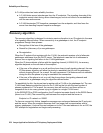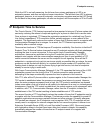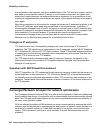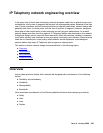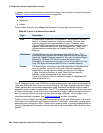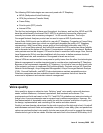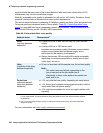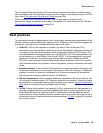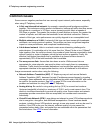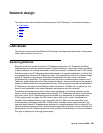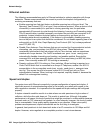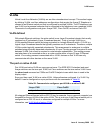
IP Telephony network engineering overview
284 Avaya Application Solutions IP Telephony Deployment Guide
In general, these concerns dictate a hierarchical network that consists of at most three layers
(Table 48:
Layers in a hierarchical network on page 284):
● Core
● Distribution
● Access
Some smaller networks can collapse the functions of several layers into one device.
For IP Telephony to work well, WAN links must be properly sized with sufficient bandwidth for
voice and data traffic. Each voice call uses 9.6 Kbps to 120 Kbps, depending on the desired
codec, payload size, and header compression used. Additional bandwidth might be used if
wideband audio or video is implemented. The G.729 compression algorithm, which uses about
27 Kbps of bandwidth, is one of the most used standards today. Traditional telephone metrics,
such as average call volume, peak volume, and average call length, can be used to size
interoffice bandwidth demands. See Traffic engineering
for more information.
Quality of Service (QoS) also becomes increasingly important with WAN circuits. In this case,
QoS means the classification and the prioritization of voice traffic. Voice traffic must be given
absolute priority through the WAN. If links are not properly sized or queuing strategies are not
properly implemented, the quality and the timeliness of voice and data traffic will be less than
optimal.
Table 48: Layers in a hierarchical network
Layer Description
Core The core layer is the heart of the network. The purpose of the core
layer is to forward packets as quickly as possible. The core layer
must be designed with high availability in mind. Generally, these
high-availability features include redundant devices, redundant power
supplies, redundant processors, and redundant links. Today, core
interconnections increasingly use Gigabit Ethernet or 10 Gigabit
Ethernet.
Distribution The distribution layer links the access layer with the core. The
distribution layer is where QoS feature and access lists are applied.
Generally, Gigabit Ethernet connects to the core, and either Gigabit
Ethernet or 100base-TX/FX links connect the access layer.
Redundancy is important at this layer, but not as important as in the
core. This layer is combined with the core in smaller networks.
Access The access layer connects servers and workstations. Switches at this
layer are smaller, usually 24 to 48 ports. Desktop computers,
workstations, and servers are usually connected at 100 Mbps or
1 Gbps. Limited redundancy is used. Some QoS and security
features can be implemented in the access layer.
Power over Ethernet (PoE) is included to power IP telephones and
other access devices.



